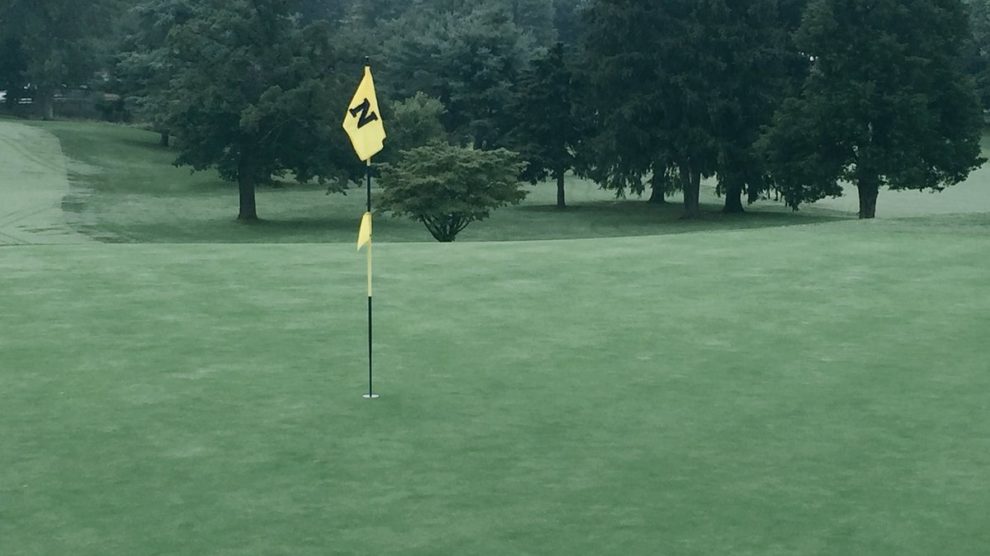The United States military has 145 golf facilities for our service members to play and use as a means of breaking away from the daily stresses that come with the job. However, all of the courses in the continental United States are required by federal law to be completely self-sufficient, and the small number of courses overseas get scant funding. The same misguided requirement so many municipalities force on golf courses -- but not tennis courts or baseball fields -- can hamper the golf experience for these military families.
Recognizing this problem, Jennifer Poth, who is the daughter of a former United States Air Force lieutenant, started Operation Support Military Golf. The organization's goal is to raise money to help support military golf facilities in their operation and capital improvement projects to give our military a better, more fitting golf experience.
We spoke with Poth about OSMG and the current state of American military golf courses.
Ryan Ballengee: I spent a number of formative golf years playing on a military base, at Ft. Meade in Maryland. As a group of juniors, we got to see what that space meant to the military family on that base. Why is there a dearth of funding to keep these facilities operating as well as possible?
Jennifer Poth: Unfortunately, Fort Meade’s Golf Course was closed in 2012 (one year prior to OSMG’s 2013 inception). Hence the positive reception by our Service Branches in not only OSMG's creation but the timing of it.
As of 2011, Continental United States Military Golf Courses are not provided government funding to operate. While courses located overseas receive only minimal funding. Under federal law 10 USC 2491a, use of appropriated funds to equip, operate, or maintain a golf course, except courses outside the US or at Remote & Isolated Department of Defense facilities or installations is prohibited. They are required to be entirely self-sufficient. OSMG was founded to help fill this “non-essential” funding void in our service-members and their families morale, welfare and recreation.
RB: Do we have an idea of how many rounds are played on these courses each year? Speaking from your personal experience, how do active military perceive these courses as it relates to creating some balance in their lives?
JP: Each of the 145 golf facilities will have their own unique number of rounds played (a number that can be obtained when asked). This number can vary based on location, weather, access for play, etc. Naval Station Mayport’s Windy Harbor Golf Club, the site of our inaugural upgrade, is located in Jacksonville, FL, allowing for virtually year round play and is accessible for play to active, retire, DOD and civilian (with MWR Card) play and averages over 40,000 rounds/year.
RB: Painting with a broad brush, what is the current state of American military golf facilities? Is the work funded more along the lines of maintenance you'd expect at a public or semi-public golf club, or is it even bigger than that (water lines, trenching, course renovations)?
JP: The state of military golf facilities varies. In recent years, there have been closures, increase and decrease in rounds, positive and negative receptions. A lot of it depends on who you are having the conversation with. For example, are they a fan of the game or not? Do they want military golf to succeed or not? Do they value the integrity and tradition that both our military and golf provide those who learn and play the game or not? Do they see the value of military golf as a means of introducing a lifetime outdoor game to individuals who might otherwise not have that opportunity or not?
RB: How does the golf industry view military golf? It seems much emphasis is placed on giving active and retired military opportunities to play away from a military base or facility.
JP: Overall, I have received a positive reception when introducing OSMG to the non-military golf industry. The best examples would be the Golf Course Superintendents Association of America (GCSAA), the Golf Course Builders Association of America (GCBAA) and the American Society of Golf Course Architects (ASGCA) all partnering with OSMG to assist in OSMG’s mission of “reviving the golf courses that revitalize our heroes.” They have expressed to me that military golf is viewed as a positive segue to the game and vital to growing the game in introducing it to variety of ages, gender, race, background, etc. In addition, after their service is completed a countless number of them take the love of the game they acquired in the service and join private clubs or support public courses once/if they no longer live near a military golf club.
RB: How can someone get involved in helping OSMG?
JP: Monetary and in-kind support is always welcomed and appreciated. Monetary contributions can be made through our website and Facebook pages. In-kind support to date has worked best through direct conversation between interested individual/organization and OSMG. OSMG welcomes questions by email at contact@operation-smg.org, or phone at (904) 626-4374.

